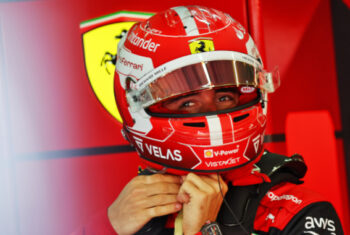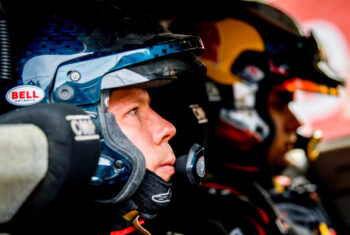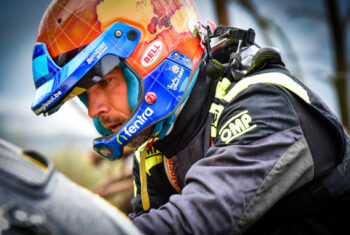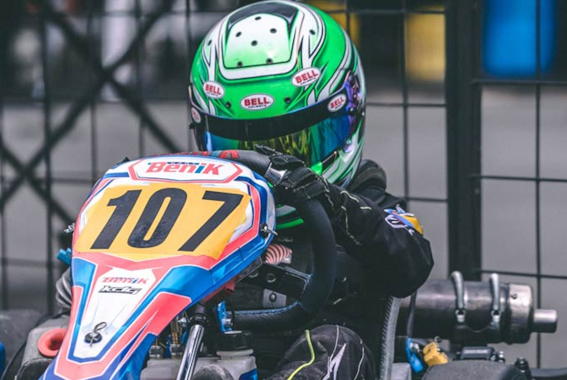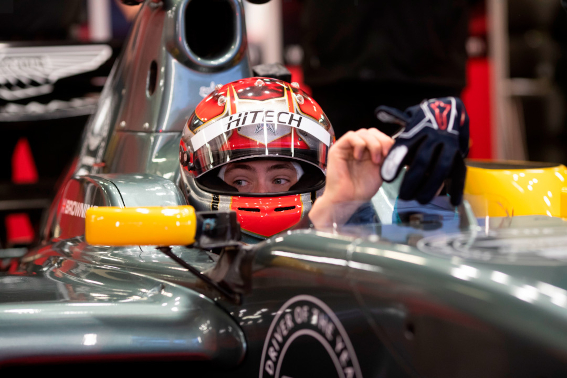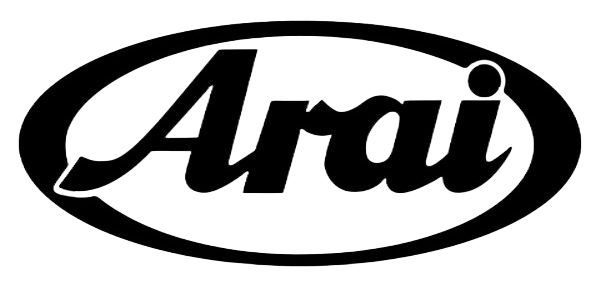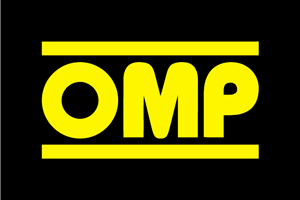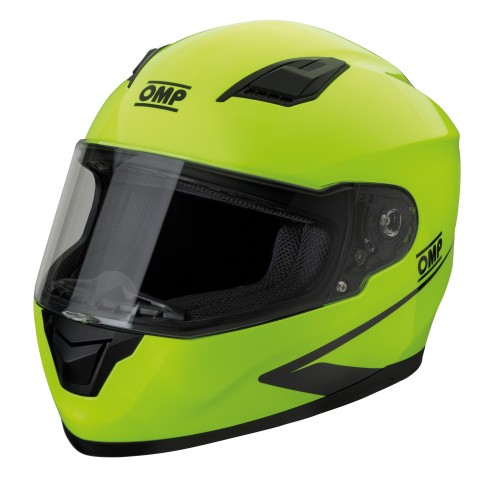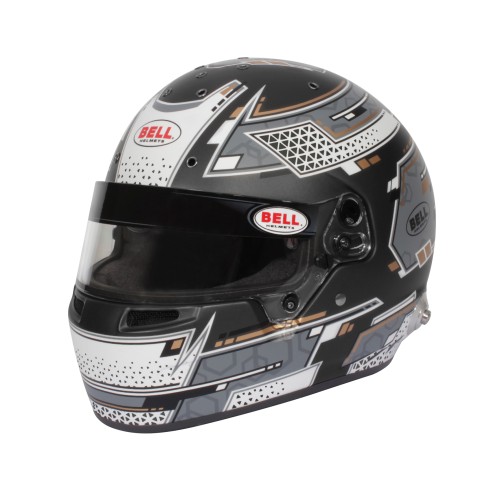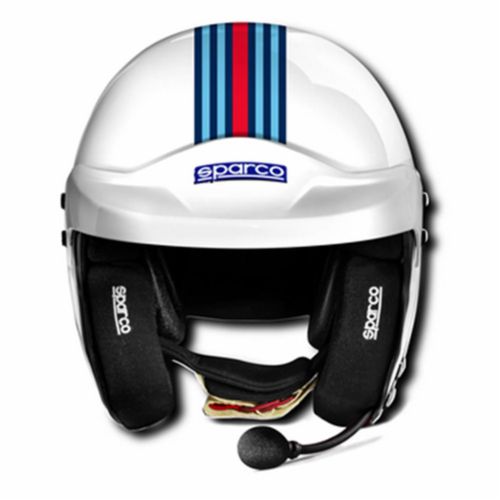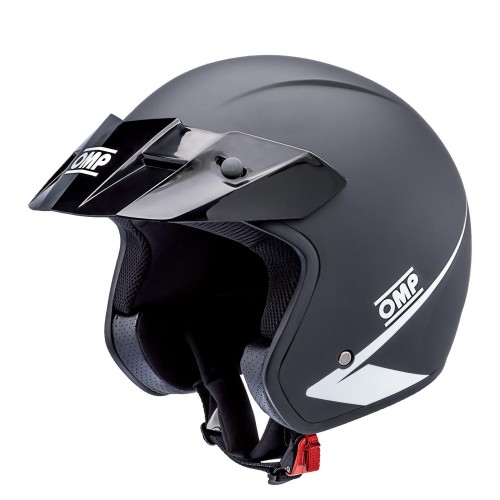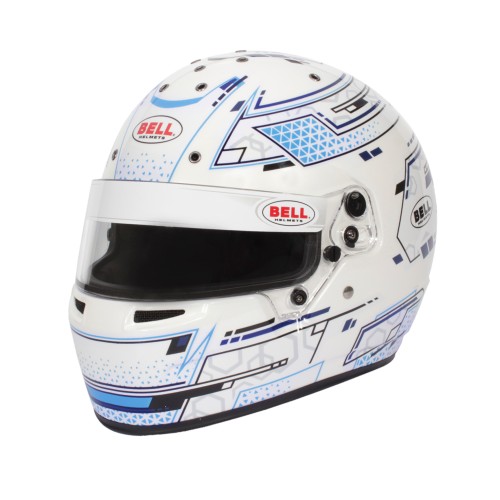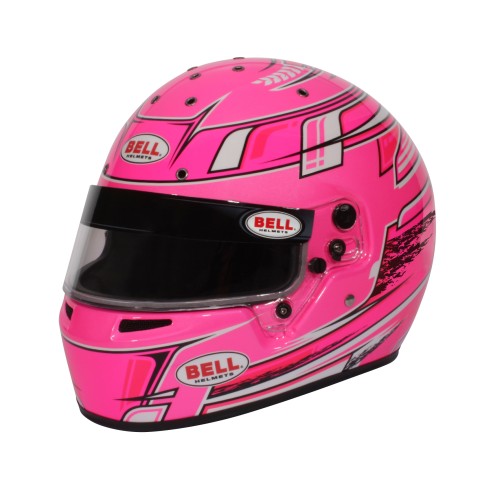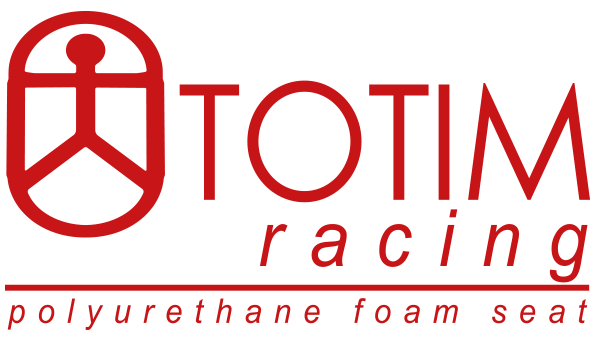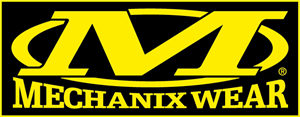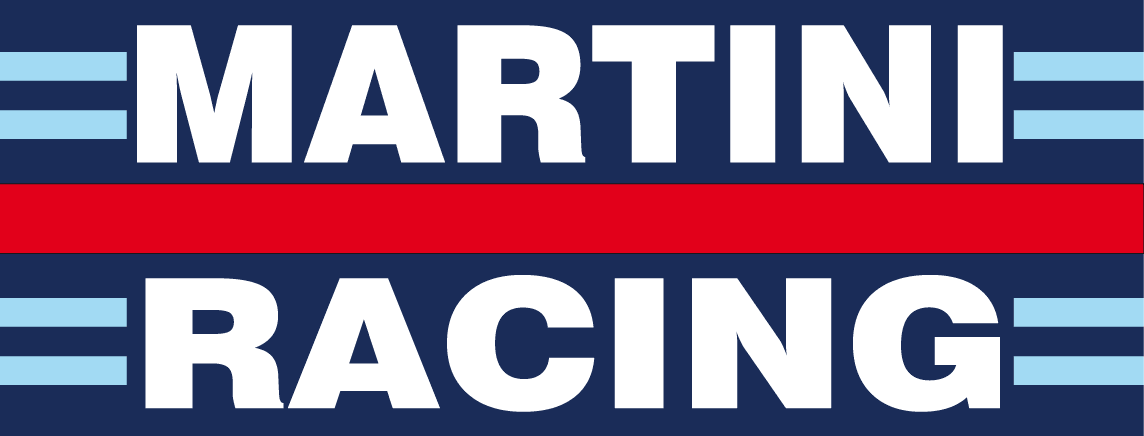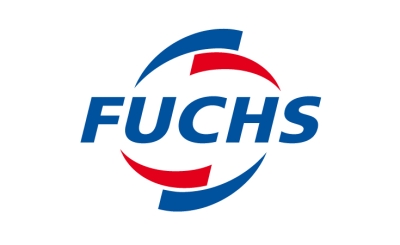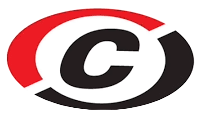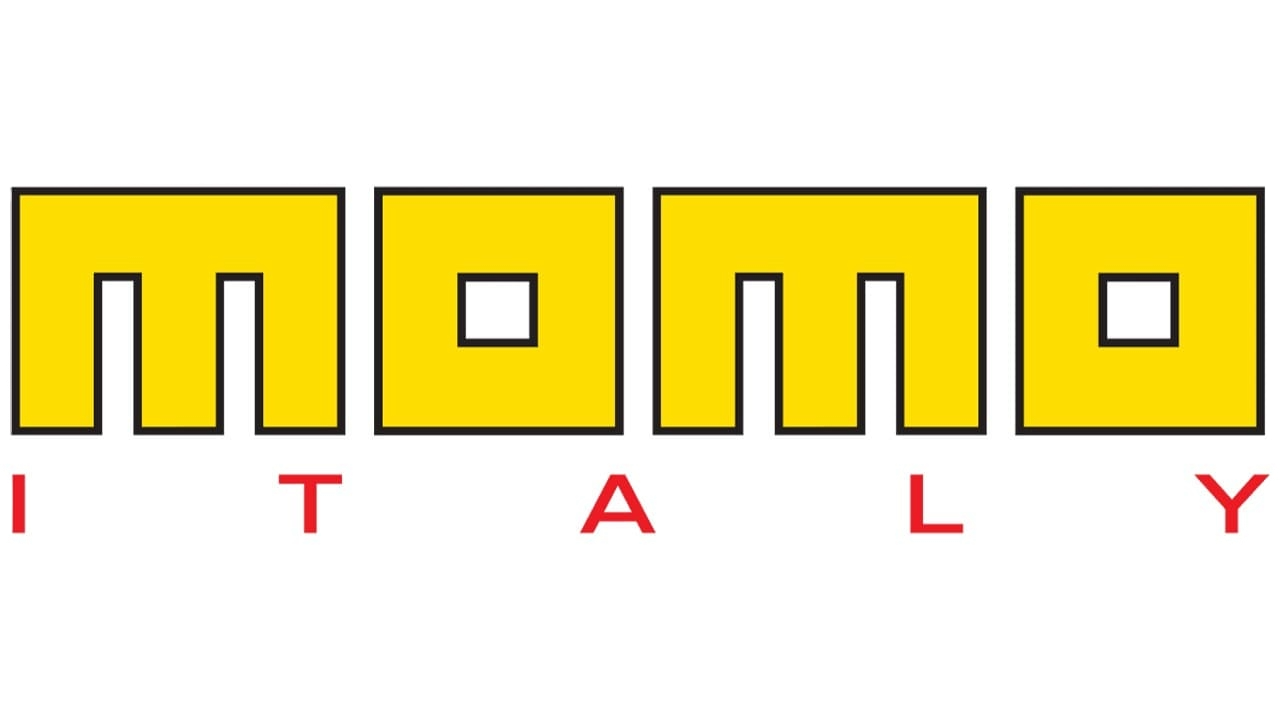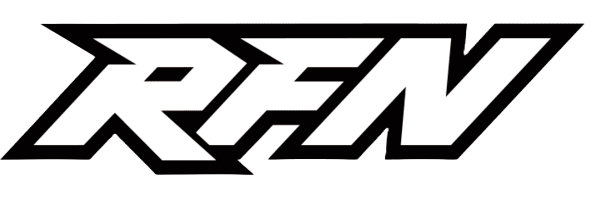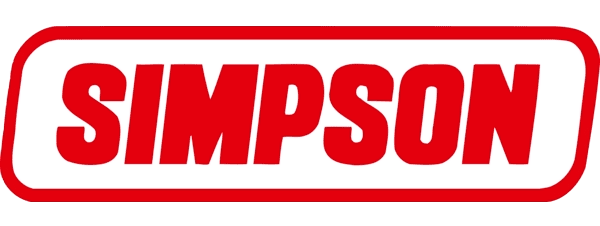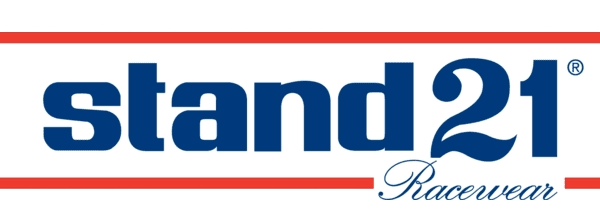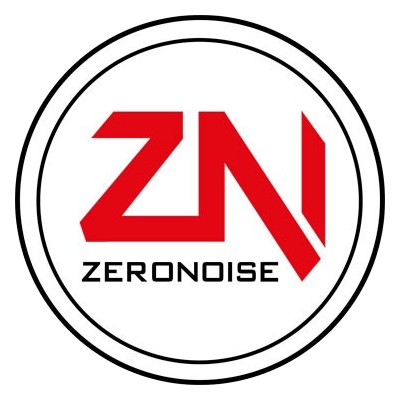
Comprehensive Buying Guide for Helmets
Choosing the right helmet is crucial for your safety in motorsport. Whether you’re involved in race car driving, rally racing, or karting, each discipline has unique requirements and standards for helmets. In this guide, we’ll cover everything you need to know to make an informed purchase, including:
- Helmet Standards and Regulations
- Types of Helmets: Race, Rally, and Karting
- Key Features to Consider
- Material and Construction
- Helmet Fit and Sizing
- Helmet Care and Maintenance
- Helmets for Frontal Head Restraints (FHR)
- Choosing the Right Visor
- Incorporating Communication Systems
- Budget Considerations
- Top Helmet Brands
Welcome to our comprehensive helmet buying guide from Grand Prix Racewear! Whether you’re a seasoned racer or just getting started, finding the right helmet is crucial for your safety and performance on the track. In this video, we’ll walk you through everything you need to know about choosing the perfect helmet, from key safety features and fit tips to the latest styles and technologies. We’ll also provide expert advice on maintaining your helmet to ensure it offers maximum protection
1. Helmet Standards and Regulations
Understanding helmet standards is critical since helmets used in motorsport need to meet specific safety regulations. These regulations are determined by various organizations, with the Fédération Internationale de l’Automobile (FIA) being the main governing body for most motorsport activities. Here are the main standards to consider:
- FIA 8859-2015: A general standard for circuit racing helmets. Helmets certified to this standard are suitable for most types of motorsport.
- FIA 8860-2018: A more stringent standard often required for professional racing. Helmets that meet this standard offer enhanced protection, including increased resistance to impacts, penetration, and fire.
- Snell SA2020: Common in North America, this standard is also widely accepted in other regions. It specifies requirements for impact protection, fire resistance, and strap strength.
- Snell K2020: Specific to karting, this standard focuses on protecting the driver from multiple impacts and abrasions without requiring fire resistance.
- SFI 31.1A/31.1/31.2A: These are American standards for automotive helmets, focusing on impact protection and fire resistance.
Important Note: Always check the specific helmet regulations for the series you are entering, as different organizations may have unique requirements.
Are Older Homologations Still Valid?
- Older Standards (e.g., Snell SA2015): May still be accepted for some events, but most organizers will require helmets certified to the latest standards to ensure the highest safety levels. Always check with the event regulations.
2. Types of Helmets: Race, Rally, and Karting
Understanding the differences between race, rally, and karting helmets is crucial for selecting the correct helmet for your needs.
A. Race Helmets
Race helmets are designed specifically for circuit racing, such as Formula 1, GT racing, or touring car racing. Key characteristics include:
- Features: Race helmets prioritize aerodynamics and airflow. They often come with advanced ventilation systems, spoiler options, and aerodynamic shapes to minimize drag and lift.
- Fire Resistance: Race helmets must be fire-resistant, as fire is a potential risk in circuit racing. They meet the stringent FIA or Snell SA standards for flame resistance.
- Weight: Typically lighter than rally helmets due to the focus on comfort for longer periods. Made from advanced materials like carbon fiber or composite blends.
- Visibility: Designed with a narrower eye port compared to rally helmets. This reduces the risk of debris entry but still provides ample forward visibility.
- Communication: Usually not equipped with built-in communication systems; drivers often rely on in-car radio systems.
B. Rally Helmets
Rally helmets are designed for use in rallying, where the environment and conditions differ significantly from circuit racing. Key characteristics include:
- Features: Rally helmets come with a wider eye port for improved peripheral vision, which is essential for navigating various terrains. They also offer an internal sun visor in many cases.
- Communication: Often equipped with integrated communication systems (microphones and earphones) to facilitate communication between the driver and co-driver. The communication setup is usually customizable to suit specific preferences or car setups.
- Weight: Typically heavier than race helmets due to the additional features like communication systems and extended protection.
- Fire Resistance: Also required to be fire-resistant and usually meet FIA or Snell SA standards.
- Chin Strap and Protection: Rally helmets have a more robust chin strap design and additional chin and cheek padding to protect against multiple impacts.
- Ventilation: Designed to provide ample ventilation for the varied environments faced in rallying, including both cold and hot weather.
C. Karting Helmets
Karting helmets are tailored for kart racing, which has its own unique set of requirements:
- Features: Karting helmets often have simpler designs compared to race and rally helmets. They may not offer advanced aerodynamics or ventilation systems.
- Impact Protection: Designed to protect against multiple impacts, as kart drivers are more likely to experience collisions or bumps.
- Weight: Generally lightweight for comfort and mobility.
- Fire Resistance: Not usually fire-resistant, as fire risks are lower in karting. Hence, they adhere to the Snell K2020 or similar karting-specific standards.
- Visibility: A wider eye port is standard for better peripheral vision.
- Ventilation: Basic ventilation systems, as karting speeds are lower, reducing the need for advanced airflow management.
3. Key Features to Consider
When choosing a helmet, consider the following features to ensure maximum safety and comfort:
- Shell Material: Helmets are typically made from materials such as fiberglass, carbon fiber, Kevlar, or composite blends. Carbon fiber helmets are the lightest and offer excellent protection, but they are also the most expensive. Fiberglass and composite helmets are more affordable but tend to be heavier.
- Inner Liner: The inner liner, often made from expanded polystyrene (EPS), absorbs energy upon impact. Look for multi-density liners that offer different levels of protection in different areas.
- Ventilation: Good ventilation is crucial, especially for race helmets used in hot conditions. Look for helmets with multiple air vents and channels to ensure adequate airflow.
- Visor: For race helmets, the visor’s thickness and anti-scratch/anti-fog coatings are important. Consider whether you need a dark visor for sun protection or a clear one for night racing.
- Strap and Buckle System: Most helmets use a Double-D ring buckle system, which provides a secure fit. Make sure the chin strap is comfortable and adjustable.
- HANS Device Compatibility: If you are racing in a series that mandates or recommends a Head and Neck Support (HANS) device, ensure the helmet is compatible. Most FIA-approved helmets will be HANS-ready.
- Padding and Comfort Liners: Removable and washable padding can significantly enhance comfort, especially for long-duration events.
4. Material and Construction
Helmets are constructed using different materials, each offering various levels of protection, weight, and cost:
- Fiberglass: Offers good protection and is cost-effective. Slightly heavier than more advanced materials.
- Carbon Fiber: Offers the best strength-to-weight ratio, making it very light and strong. However, it is also the most expensive option.
- Composite (Carbon/Kevlar Mix): A blend of different materials like carbon fiber and Kevlar. This option is lighter and stronger than fiberglass but less expensive than pure carbon fiber.
- Polycarbonate: Often used in entry-level helmets. It’s affordable but heavier and offers less impact protection compared to other materials.
5. Helmet Fit and Sizing
A properly fitted helmet is vital for safety and comfort. Here’s how to ensure the correct fit:
- Measure Your Head: Use a measuring tape to measure the circumference of your head just above the eyebrows and ears. Compare this measurement to the sizing chart provided by the helmet manufacturer.
- Try it On: When trying on a helmet, it should fit snugly but not uncomfortably tight. The helmet should not move freely when you shake your head.
- Check for Pressure Points: Wear the helmet for a few minutes to check for any pressure points. A properly fitting helmet should not cause discomfort or pain.
- Retention Test: With the helmet on, try to roll it off your head by pushing from the back of the helmet. It should not come off if it is correctly fitted.
- Eyewear Compatibility: If you wear glasses or sunglasses, make sure the helmet accommodates them comfortably.
6. Helmet Care and Maintenance
Proper care and maintenance will extend the lifespan of your helmet and ensure it remains safe to use:
- Cleaning: Clean the outer shell with mild soap and water. For the inner liner, check if it is removable and washable. Use a gentle detergent, and let it air dry.
- Storage: Store your helmet in a cool, dry place away from direct sunlight. Avoid storing it in areas where it may be exposed to chemicals or extreme temperatures.
- Inspection: Regularly inspect your helmet for signs of wear, cracks, or damage. If the helmet has been involved in an impact, replace it, even if no visible damage is evident.
- Replacement: Helmets have a finite lifespan. Most manufacturers recommend replacing them every 3-5 years, depending on usage. Always check for the expiration date on the helmet label.
7. Helmets for Frontal Head Restraints (FHR)
If you plan to use a Frontal Head Restraint system like HANS, your helmet must be compatible. Look for these features:
- FHR Anchor Points: Helmets marked as “FHR-ready” come with anchor points or pre-drilled holes for attaching FHR tethers. Look for helmets with FIA 8858-2010 or FIA 8858-2018 approval, indicating FHR compatibility.
- Certification: Ensure the helmet meets FIA 8859-2015, FIA 8860-2018, or Snell SA2020 standards, which are designed to work with FHR devices.
8. Choosing the Right Visor
A visor protects your eyes from debris, dust, and sun glare. Consider these options:
- Clear vs. Tinted Visors:
- Clear Visors: Best for night racing or low-light conditions.
- Tinted Visors: Reduces sun glare; available in light, medium, and dark tints. Check event regulations for approved tints.
- Anti-Fog and Anti-Scratch Coatings: Essential for maintaining visibility in various weather conditions.
- Tear-Offs: Thin plastic films that can be quickly removed to clear debris or dirt from the visor. Ideal for endurance racing or rallying.
- Helmet Model Compatibility: Ensure the visor fits your specific helmet model, as some helmets have proprietary visor designs.
9. Incorporating Communication Systems
If you plan to use a communication system, keep these factors in mind:
- Pre-Installed Systems: Some helmets come pre-wired or have built-in microphones and speakers.
- Helmet Compatibility: Look for helmets with internal space or pockets to accommodate a communication system without compromising comfort.
- Noise-Canceling Technology: Consider helmets designed with noise-canceling features to improve audio clarity, especially at high speeds.
10. Budget Considerations
The price of helmets can range significantly, depending on the type, material, brand, and additional features:
- Entry-Level Helmets: Typically made from polycarbonate or fiberglass, these helmets range from £200 to £500. Suitable for beginners or those on a budget.
- Mid-Range Helmets: Made from composite materials, offering a good balance of weight, protection, and comfort. These helmets usually cost between £500 and £1,200.
- High-End Helmets: Made from carbon fiber or advanced composites, providing the best protection, lightest weight, and premium features. Prices start at £1,200 and can exceed £3,000.
11. Top Helmet Brands
When selecting a motorsport helmet, choosing the right brand is crucial. Each brand has its own unique strengths, designs, and features that cater to different types of motorsport disciplines, from Formula 1 to karting and rally. Here is an in-depth look at five of the leading helmet brands in the industry: Bell, Stilo, Arai, Sparco, and OMP.
1. Bell Helmets
Overview:
Bell Helmets, founded in 1954, is renowned for its pioneering role in motorsport safety. Bell has a rich heritage and is considered a gold standard in helmet technology, with a strong presence in nearly every major motorsport series worldwide.
Key Features:
- Advanced Materials: Bell helmets use lightweight materials like carbon fiber and composite blends, which offer superior protection while keeping weight to a minimum.
- Aerodynamics and Ventilation: Designed with aerodynamics in mind, Bell helmets reduce drag and lift at high speeds. They feature multiple ventilation channels for cooling and moisture management.
- Versatility and Customization: Bell offers a wide range of models suitable for different motorsport disciplines, with options for color, fit, and additional features such as hydration systems or communications setups.
- Safety Standards: Bell helmets meet or exceed FIA, Snell, and SFI standards, with models like the HP7 conforming to the FIA 8860-2018 standard, known for its rigorous safety criteria.
Popular Models:
- Bell HP7: A high-performance helmet designed for professional racing, offering exceptional safety features and used in Formula 1 and other top-tier motorsports.
- Bell RS7 Carbon: A lightweight, carbon-fiber helmet that provides advanced aerodynamics and cooling, making it a popular choice in racing.
- Bell GT5 Rally Pro: A rally-specific helmet featuring integrated communication options and a wider eye port for enhanced visibility.
2. Stilo Helmets
Overview:
Stilo, an Italian brand founded in 1999, is highly regarded for its innovative designs and focus on rally helmets. Stilo helmets are widely used in rally racing, touring car championships, and GT racing, especially among professional drivers.
Key Features:
- Integrated Communication Systems: Stilo helmets are known for their built-in communication systems, including microphones and noise-canceling earphones, which are crucial for rally drivers.
- Lightweight Construction: Made with carbon fiber, Stilo helmets are some of the lightest on the market, providing comfort over long stages and reducing fatigue.
- Modular Design: Many Stilo helmets feature removable visors, peak visors, and ventilation components that can be adjusted or swapped to suit different conditions.
- Safety Standards: Stilo helmets meet FIA and Snell SA standards, ensuring top-tier safety. Their WRC DES series is especially popular in the rally community for its exceptional protection and communication capabilities.
Popular Models:
- Stilo ST5 GT Carbon: A versatile helmet used in circuit racing and rallying, offering a lightweight carbon shell and excellent ventilation.
- Stilo WRC DES: Designed specifically for rally racing, this helmet features an integrated communication system and noise-canceling capabilities.
- Stilo ST5F N Zero 8860: A premium helmet meeting FIA 8860-2018 standards, known for its ultra-lightweight carbon fiber shell and advanced safety features.
3. Arai Helmets
Overview:
Arai, a Japanese brand with a legacy dating back to 1926, is known for its meticulous craftsmanship and rigorous testing standards. Arai helmets are hand-made and are favored by professional racers for their comfort, quality, and safety features.
Key Features:
- Round Shell Design: Arai helmets have a unique round shell shape that deflects impact energy, reducing the chances of direct impact absorption and enhancing safety.
- Multi-Density Liner: Arai uses a multi-density EPS liner to optimize impact protection across various zones of the helmet.
- Ventilation System: Arai helmets are known for their efficient ventilation systems that manage airflow, keeping the rider cool while reducing wind noise.
- Safety Standards: Arai helmets meet or exceed FIA, Snell, and ECE standards. They are known for passing some of the most stringent impact and penetration tests in the industry.
Popular Models:
- Arai GP-7 SRC: A top-tier helmet that meets FIA 8860-2018 standards, designed for professional racing with a carbon fiber shell and exceptional impact protection.
- Arai GP-6S: A popular choice for amateur racers, offering a lightweight design, superior ventilation, and excellent comfort.
- Arai SK-6: A karting-specific helmet that meets Snell K2020 standards, designed for young racers and adult kart drivers.
4. Sparco Helmets
Overview:
Sparco, an Italian brand established in 1977, is known for its full range of motorsport products, including helmets. Sparco helmets are designed for both amateur and professional drivers, combining Italian style with functional safety.
Key Features:
- Affordable Range: Sparco offers helmets at various price points, making them accessible to a wide range of drivers, from beginners to professionals.
- Lightweight and Comfortable: Sparco helmets use fiberglass and composite materials to keep the weight low while maintaining high levels of protection.
- Built-in Features: Some Sparco models come with built-in communication systems or provisions for hydration tubes, appealing to rally and endurance racers.
- Safety Standards: Sparco helmets meet FIA and Snell standards, ensuring compliance with the latest safety regulations for circuit racing and rallying.
Popular Models:
- Sparco Sky RF-7W: An FIA-approved helmet made with a lightweight carbon-Kevlar shell, offering good aerodynamics and ventilation.
- Sparco Air Pro RF-5W: A versatile fiberglass helmet designed for various types of motorsport, featuring a wide eye port and excellent ventilation.
- Sparco Club X-1: A budget-friendly option for beginners, designed with a fiberglass shell and basic comfort features.
5. OMP Helmets
Overview:
OMP, another Italian brand with a strong reputation in motorsports, has been manufacturing safety equipment since 1973. OMP helmets are known for their quality, affordability, and compliance with international safety standards.
Key Features:
- Cost-Effective Options: OMP offers a range of helmets that provide solid protection at more affordable prices, making them a popular choice for amateur racers.
- Focus on Comfort: OMP helmets prioritize comfort with features like adjustable visors, padded chin straps, and interior linings that are removable and washable.
- Variety of Models: OMP produces helmets for different motorsport disciplines, including racing, rally, and karting.
- Safety Standards: All OMP helmets meet FIA and Snell regulations, ensuring they are safe for competitive use.
Popular Models:
- OMP Grand Prix 10: A premium helmet with a carbon fiber shell, excellent ventilation, and FIA 8860-2018 certification, suitable for high-level racing.
- OMP Circuit Evo: A versatile helmet made with a composite shell, meeting FIA and Snell SA standards, ideal for various forms of racing.
- OMP Star: A cost-effective helmet for beginners, made from fiberglass, and designed for general use in motorsport.
All five brands—Bell, Stilo, Arai, Sparco, and OMP—offer high-quality helmets tailored to different types of motorsport. Your choice should depend on your specific requirements, such as the type of racing you are involved in, the features you prioritize (like weight, communication systems, or aerodynamics), and your budget. By choosing a helmet from one of these trusted brands, you ensure that you are investing in a product that offers safety, comfort, and durability on the track.
Conclusion
Choosing the right helmet is critical for your safety and performance in motorsport. Consider the type of racing you’ll be doing, the relevant standards and regulations, the materials and features that matter most, and your budget. Always prioritize safety and comfort when making your selection, and ensure your helmet meets or exceeds the required standards for your discipline. With the right helmet, you can focus on what truly matters: enjoying the thrill of the race while staying safe on the track.
Helmets & Accessories at Grand Prix Racewear
VISIT OUR SILVERSTONE SHOWROOM AT THE HOME OF BRITISH MOTOR RACING
The GPR showroom houses a massive range of products and is open through the year, 7 days a week in season.
We stock a massive range of race, rally & kartwear including driver and mechanic suits, race underwear, boots and gloves from international leading brands like Alpinestars, Sparco, OMP and Sabelt. There’s an extensive range of open and full face helmets for racing, rallying and karting from Bell, Arai and Stilo, as well as a large selection of leisure and luggage items. You’ll also find some cracking products from our GPR Electric range including scooters and dirt bikes, as well as seasonal in-store exclusive special offers.
The GPR showroom occupies two floors of our prestigious 10,000 square feet facility, located just outside the main entrance of the world-famous Silverstone Circuit, the home of British Motorsport. Minutes from Milton Keynes, an hour from Birmingham and just 90 minutes from the centre of London, we are easily accessible from the A43, M1 and M40.
GPR does not claim the copyright to all images used in this blog. When copyright is unknown, we have not been able to seek permission for image use and will remove immediately any infringing content upon request.

